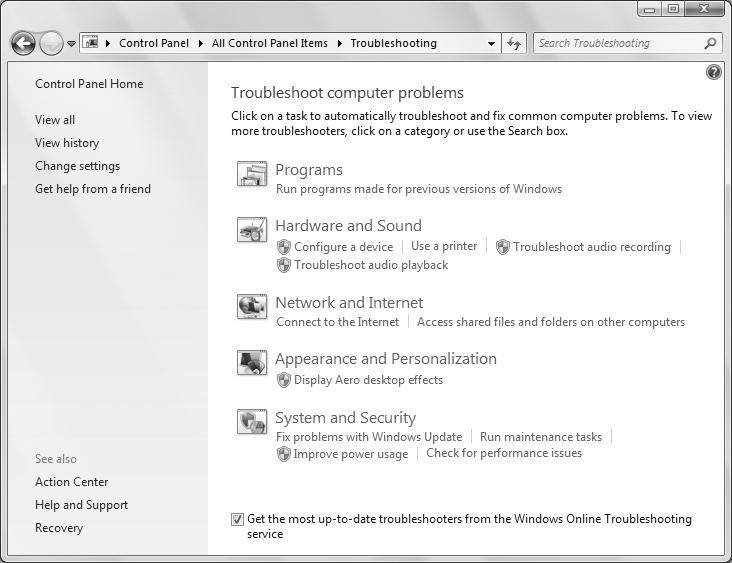Mastering Performance Optimization: A Comprehensive Guide to Troubleshooting Performance Issues in Windows 7

In the dynamic world of computing, optimal performance is essential for maximizing productivity and efficiency. However, Windows 7 users may encounter various performance issues that can hinder system responsiveness and degrade overall user experience. From sluggishness to freezing and crashing, these issues can disrupt workflows and impact productivity. Fortunately, Windows 7 provides a robust set of tools and techniques for troubleshooting performance issues and optimizing system performance. In this exhaustive guide, we will embark on a journey to demystify the process of troubleshooting performance issues in Windows 7, exploring its intricacies and providing step-by-step instructions for diagnosing and resolving common performance-related problems.
Understanding Performance Issues in Windows 7:
Before delving into troubleshooting techniques, let’s first grasp the concept and significance of performance issues in Windows 7:
- Definition: Performance issues refer to any abnormalities or degradation in system responsiveness, speed, or efficiency that impede the smooth operation of the Windows 7 operating system.
- Symptoms: Performance issues in Windows 7 can manifest in various ways, including slow startup and shutdown times, sluggishness when opening applications or files, system freezes or crashes, high CPU or memory usage, and unresponsiveness to user input.
- Causes: Performance issues in Windows 7 can be caused by a variety of factors, including hardware limitations, software conflicts, insufficient system resources, malware or virus infections, outdated drivers, and misconfigurations.
Troubleshooting Performance Issues in Windows 7:
Now, let’s explore the step-by-step process of troubleshooting performance issues in Windows 7:
- Identifying Symptoms:
- Begin by identifying the specific symptoms of the performance issue you’re experiencing. Pay attention to any error messages, warning signs, or unusual behavior exhibited by the system.
- Checking System Resources:
- Open the Task Manager by pressing Ctrl + Shift + Esc or right-clicking on the taskbar and selecting “Task Manager.”
- Review the Performance tab to monitor CPU, memory, disk, and network usage. Identify any resource-intensive processes or bottlenecks that may be contributing to the performance issue.
- Closing Unnecessary Programs:
- Use the Processes tab in Task Manager to identify and close any unnecessary programs or background processes that are consuming system resources.
- Right-click on the offending processes and select “End Task” to terminate them.
- Updating Drivers and Software:
- Ensure that your device drivers and system software are up-to-date. Outdated drivers and software can cause compatibility issues and performance degradation.
- Visit the manufacturer’s website or use Windows Update to download and install the latest driver updates and software patches.
- Running Disk Cleanup:
- Use the Disk Cleanup utility to remove temporary files, system caches, and other unnecessary data that may be cluttering your hard drive and slowing down system performance.
- Click on the Start button, type “Disk Cleanup” into the search box, and press Enter to launch the utility. Follow the on-screen prompts to clean up your disk.
- Performing Disk Defragmentation:
- Run the Disk Defragmenter utility to optimize the layout of files on your hard drive and improve disk read/write performance.
- Click on the Start button, type “Disk Defragmenter” into the search box, and press Enter to launch the utility. Follow the on-screen prompts to defragment your disk.
Advanced Techniques and Tips:
To further troubleshoot performance issues and optimize system performance in Windows 7, consider the following advanced techniques and tips:
- Checking for Malware and Viruses:
- Use a reputable antivirus program to scan your system for malware and viruses that may be causing performance issues. Remove any detected threats and ensure that your system is protected against future infections.
- Adjusting Visual Effects:
- Disable unnecessary visual effects and animations to reduce system overhead and improve performance. Navigate to “Control Panel” > “System and Security” > “System” > “Advanced system settings” > “Performance settings” to adjust visual effects.
- Monitoring System Temperature:
- Monitor the temperature of your system components, such as the CPU and GPU, to ensure that they are operating within safe limits. Use hardware monitoring utilities or third-party software to track temperatures and identify overheating issues.
- Checking for Hardware Failures:
- Perform hardware diagnostics to check for hardware failures that may be contributing to performance issues. Test your RAM, hard drive, and other components using built-in diagnostic tools or third-party utilities.
- Optimizing Startup Programs:
- Disable unnecessary startup programs to reduce boot times and improve system performance. Use the System Configuration utility (msconfig) to manage startup programs and services.
Conclusion:
Troubleshooting performance issues in Windows 7 requires a systematic approach and a combination of tools and techniques. By following the comprehensive guide outlined above, users can diagnose and resolve common performance-related problems, optimize system performance, and ensure a smooth computing experience. Whether it’s closing unnecessary programs, updating drivers, or running disk maintenance utilities, Windows 7 provides a wealth of resources for troubleshooting and optimizing system performance. So take charge of your system’s performance today, troubleshoot performance issues with confidence, and enjoy a faster, more responsive computing experience in Windows 7.






